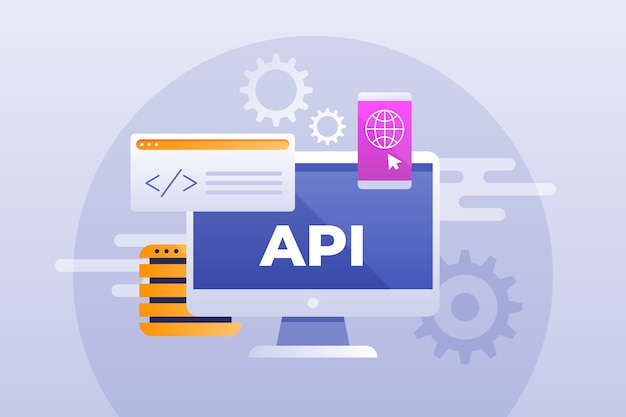Simplify Integration, Elevate Performance: RESTful API Development Made Easy
In today’s fast-paced digital landscape, the effective development and integration of RESTful APIs play a crucial role in empowering businesses to thrive and deliver exceptional user experiences. With the increasing demand for seamless connectivity and data exchange, it has become essential to simplify integration processes while elevating API performance. In this blog, we will explore how RESTful API development can be made easy, providing you with the tools and knowledge to streamline your integration efforts and optimize API performance.

RESTful API Development
REST (Representational State Transfer) is an architectural style that defines a set of principles for designing networked applications. RESTful APIs adhere to these principles, utilizing the HTTP protocol’s existing methods (GET, POST, PUT, DELETE) to perform operations on resources. This simplicity and familiarity make RESTful APIs easy to understand and implement.
Simplify API Integration
One of the key advantages of RESTful API development is its ability to simplify API integration. With REST, APIs can be easily integrated into various applications and platforms, regardless of their programming languages or frameworks. The stateless nature of REST allows for loosely coupled systems, enabling developers to build modular applications and exchange data seamlessly. Whether it’s integrating a payment gateway, social media authentication, or external services, RESTful APIs provide a standardized and straightforward approach to integration.
Streamline API Development
RESTful API development offers a streamlined approach to building APIs, making the development process more efficient. By adhering to REST principles, developers can leverage the simplicity and consistency of HTTP methods, status codes, and resource representations. This standardization eliminates the need for complex protocol negotiations and enables rapid development. Additionally, RESTful APIs can leverage existing web infrastructure and tools, such as HTTP caching and load balancers, further enhancing their performance and scalability.
Boost RESTful API Performance
API performance is crucial for delivering a seamless user experience. RESTful API development provides several techniques to boost performance. One such technique is caching, where responses are stored and served directly from cache, reducing the need for redundant requests to the server. Additionally, RESTful APIs can implement pagination, enabling efficient retrieval of large datasets by retrieving data in smaller, manageable chunks. By optimizing resource representations and using compressed responses, the API’s overall performance can be significantly improved.
Making API Development Easy
To simplify RESTful API development further, developers can leverage frameworks and tools designed specifically for this purpose. Popular frameworks like Express.js, Django, and Flask provide abstractions and utilities that handle much of the boilerplate code, allowing developers to focus on business logic. These frameworks also include built-in support for routing, request handling, and response formatting, making API development easier and more enjoyable.
Easy API Development
RESTful API development may seem intimidating to beginners, but with the right approach, it can be made easy and approachable. Start by understanding the basic principles of REST, including resource identification, stateless communication, and leveraging HTTP methods. By following RESTful conventions and utilizing frameworks that simplify API development, beginners can quickly get started and build robust APIs.
Elevate API Performance
Performance is a critical aspect of API development. To elevate API performance, consider the following best practices. First, optimize resource representations to ensure that data payloads are concise and relevant. Implement caching mechanisms to reduce server load and improve response times. Utilize pagination techniques to efficiently retrieve and deliver large datasets. By incorporating these best practices, RESTful APIs can deliver optimal performance and responsiveness.
RESTful API Development Best Practices
Adhering to best practices throughout the development process is crucial for building maintainable and scalable RESTful APIs. This comprehensive guide covers essential best practices, such as designing a consistent and intuitive API structure, utilizing proper HTTP status codes, implementing authentication and authorization mechanisms, and versioning your APIs to ensure backward compatibility. Following these practices ensures that your APIs are robust, well-documented, and easy to consume.
RESTful API Development Tips
To simplify RESTful API development, consider these practical tips. Start by thoroughly designing your API, including endpoints, request/response formats, and error handling mechanisms. Leverage existing frameworks and libraries that provide abstractions and utilities, reducing the amount of boilerplate code you need to write. Additionally, automate testing and documentation processes to ensure API reliability and ease of use. These tips will streamline your development workflow and make the process more manageable.
In conclusion, simplifying integration and elevating performance in RESTful API development is paramount for success in the modern technological landscape. By embracing best practices and following proven strategies, businesses can ensure smooth connectivity, seamless data exchange, and superior user experiences. Whether you are a beginner or an experienced developer, optimizing your API development process will empower you to unlock new possibilities, drive innovation, and stay ahead of the competition. So, let us embark on this journey together, simplifying integration and elevating performance, as we delve into the realm of RESTful API development made easy.
